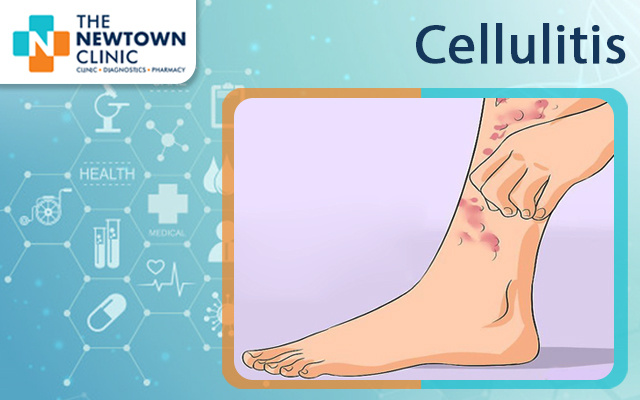A common bacterial infection of the skin is known as cellulitis. When bacteria enter through a crack in your skin, this infection happens. There is a swelling in the affected area of the skin. The area also becomes red. It is normally painful and the area feels warm when you touch it. Cellulitis can occur in the face, arms and other areas of your body, although it usually affects the skin on the lower legs. If you don’t undergo proper treatment by a skin specialist in Kolkata, the infection can spread to your lymph nodes and bloodstream. It can cause life-threatening consequences. It normally doesn’t spread from one person to another.
Symptoms
The symptoms of cellulitis include:
- A red patch on skin that keeps spreading
- Tenderness
- Swelling
- Pain
- Warmth
- Red spots
- Fever
- Skin dimpling
- Blisters
Causes
If there is a crack or break in your skin and bacteria such as streptococcus and staphylococcus enter through it, cellulitis occurs. If you have had recent surgery, cuts, wounds, ulcer, athlete’s foot or dermatitis in any area of your skin, the bacteria enter the body through that area.
Risk factors
Your risk of having cellulitis can increase due to the following factors:
-
Injury: The bacteria get an entry point if there is any injury in your body.
-
Weakened immune system: Some health conditions weaken your immune system. You are more vulnerable to infections if your immune system is weak.
-
Skin conditions: There can be breaks in your skin due to conditions such as eczema, shingles and athlete’s foot. These areas provide the entrance point for the bacteria.
-
Chronic swelling of your legs or arms (lymphedema): After surgery, this condition can sometimes happen.
-
History of cellulitis: If you had cellulitis in the past, there is a risk of developing it again.
-
Obesity: Your risk of developing cellulitis increases if you are overweight or obese.
Diagnosis
The best dermatologist in Kolkata will go through your medical history and carry out a thorough physical exam to check:
- The swelling of the skin
- The swollen glands
- Warmth and redness of the affected area
He/she may recommend the following tests if necessary:
-
A blood test: It may help the doctor to know if the infection has spread to your blood.
-
An X-ray: The doctor can know whether there is a foreign object in the skin or an infection in the bone underneath though this test.
-
A culture: The doctor draws the fluid from the affected area with the help of a needle and sends it to the lab for testing.
Treatment
A dermatologist in Salt Lake usually prescribes oral antibiotics for treating cellulitis. You should continue the antibiotics as per the doctor’s instruction. If you don’t get benefit from oral antibiotics, you may need to get hospitalized and receive intravenous antibiotics. For a speedy recovery, you may need to elevate the affected area. Surgery becomes necessary in severe cases. The doctor drains an abscess or pus that has collected in the tissue by operating the particular area. To make the area heal, he/she may also need to cut away dead tissue.


